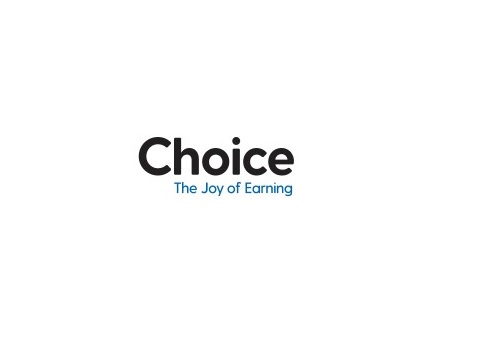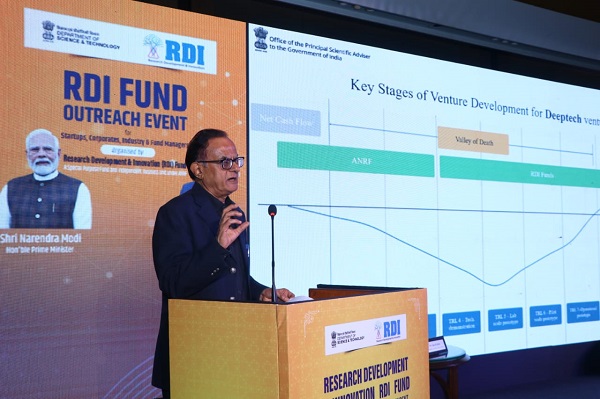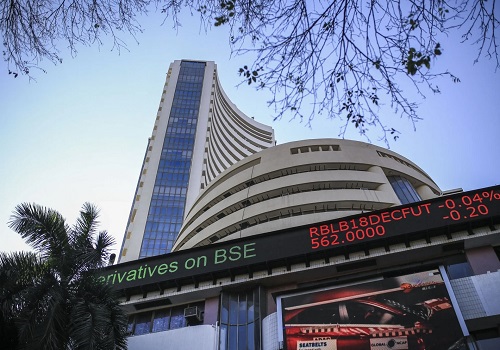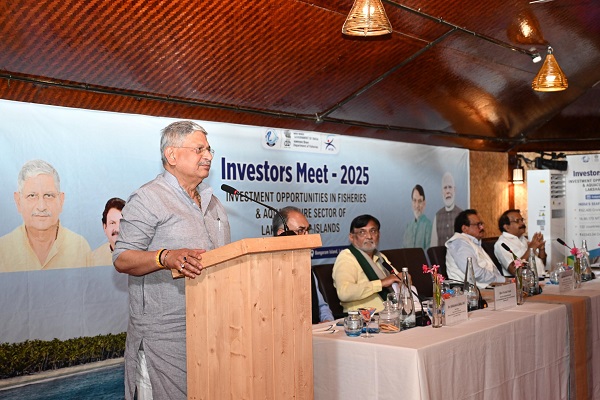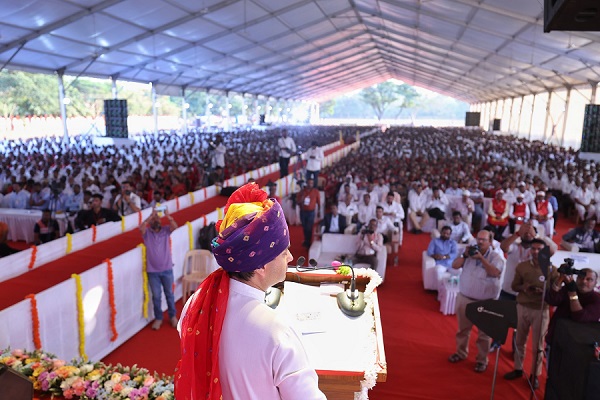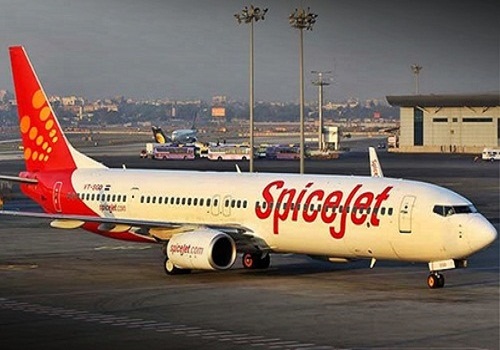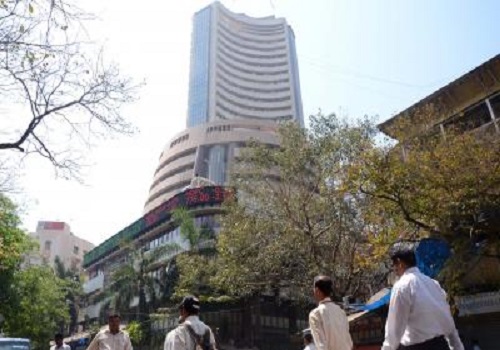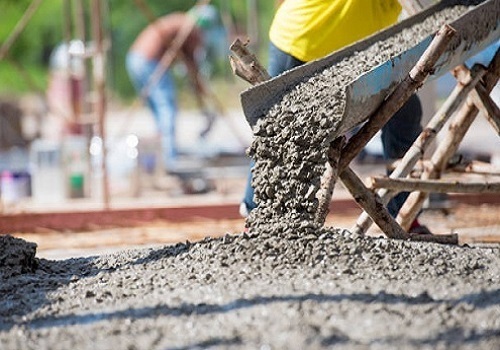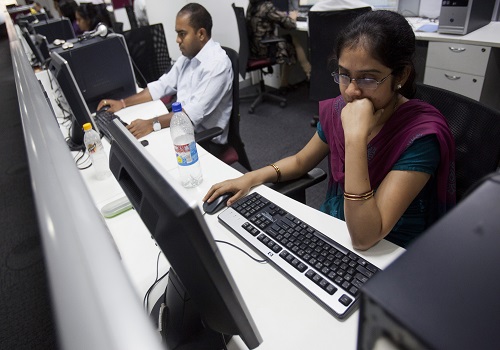Banking Sector Update : Balance sheet strength to sustain though RoA peaking; Book value growth to remain strong By ICICI Securities

Balance sheet strength to sustain though RoA peaking; Book value growth to remain strong
Despite the initial scare, the Indian banking system has emerged strongly post the covid pandemic in the form of all-time high CET 1 levels, decadal low gross / net NPAs and strong contingent provisions. FY23 has been a good year for the banking system with credit growth touching multi-year high and NIMs rising to the highest level in a decade. Strong NII growth has more than offset small headwinds on treasury and opex intensity, driving the highest RoAs / RoEs in the last 8-10 years. Going ahead, credit growth is likely to decelerate, but should still be healthy at 13-14% CAGR over FY24-25E, in our view. Post 21-23% YoY rise in NII and core PPOP in FY23, we see growth tapering down to 13-15% YoY in FY24E (and then improving to 15-17% YoY) for our coverage private banks. As against 35-40% YoY growth in the last 2 years, we see PAT growth for our coverage private banks moderating to ~15-16% for FY24/25E. Unlike steep rising RoAs / RoEs trajectory in the last 3 years, we see broadly stable RoAs / RoE for FY24- 25E, which along with slight moderation in credit growth / NIMs, which could limit the re-rating potential of valuation multiples in the near term, in our view. However, strong double digit book value growth, strong balance sheet and reasonable valuations provide comfort. We prefer stocks that can deliver strong growth (both deposits and advances), have rising RoAs, visibility of MD&CEO continuity and reasonable valuations. We prefer IIB, Axis, HDFCB among large private banks, SBI among PSB, and KVB among regional banks.
* Indian banks’ balance sheet strength is strong and likely to remain so: Despite the initial scare, the Indian banking system has emerged strongly post covid pandemic led by multiple reasons including timely regulatory intervention, prudent capital raise by banks, better lending discipline and prudent provisioning practices at banks. As of FY23, Indian banks have an all-time high CET 1 / tier 1 levels, decadal low gross / net NPAs, highest PCR and strong contingent provisions. Despite some rise in stress in covid-19 impacted sectors (unsecured retail, MFI, CV, SME etc.), gross slippages have consistently declined from 2.8% in FY21 to 2.3% in FY22 and finally to ~1.6% in FY23 as corporate segment, which was the key driver of stress during FY16-20, remained resilient. Aided by recovery (corporate as well as non- corporate), net slippages have also reduced from ~1.7/0.7% in FY21/22 to <0.5% in FY23, lowest levels in the last 10-12 years. Corporate balance sheet remains pristine and incremental lending discipline remains reasonably good. Riskiness, as measured by RWA density, has been much lower. Residual stress in terms of restructured loans, security receipts has been well contained and provided for. SMA 1+2 loans (CRILC) appear to be at multi-year lows. Despite building in some relapse from restructured loans and elevated stress in select sub-segments, we expect stable-to-improving gross slippages for our coverage banks. With some moderation in recovery, we expect small inch-up in net slippages though lower likely LGD in the current cycle and low Net NPAs should mean benign credit costs over FY24-25E.
* Credit growth to moderate to 13-14% CAGR vs ~18% of recent peak...: Credit growth started FY23 with 11.2% (YoY) and reached the peak to 17.9% (YoY) in Oct’22, partly on pent-up demand. However, a steep 250bps repo rate hike during May’22 to Feb’23 period led to a steady moderation in credit growth to ~15.0% by Mar’23. It is important to note that our bottom-up calculations aggregating >90% of the system by loans suggest credit growth stood at ~18% YoY for FY23 (vs ~20% YoY in Q2FY23). While the divergence is huge, it is not uncommon as the date for both datasets are different. The key takeaway is that we have already seen around 200-300 bps moderation in credit growth from the recent peak and estimate further moderation limited up to 200bps. We expect systemic credit growth to moderate to 13-14% for FY24-25E (vs 15% YoY in FY23). We estimate loan growth for our coverage private banks at >16% YoY for FY24E vs ~18% in FY23. We expect SBI to grow largely in line with the overall system. There has been divergent approach to loan growth for private banks and PSBs. Unlike the initial 3 quarters of FY23, Q4FY23 saw private banks delivering higher growth QoQ vs PSBs and we expect the trend to sustain.
* ...which along with moderating NIMs should lead to moderation in PAT growth: FY23 has been a good year for the banking system from NIMs perspective with sharp rise in yields under EBLR regime and contained rise in the cost of deposits (due to healthy liquidity / lower LDR). Most of the banks (barring CUBK and Bandhan) have seen healthy NIMs expansion YoY. As per our calculations, NIMs expansion was visible in Q1FY23, gained pace in Q2FY23 and seem to have peaked in Q3/Q4FY23. Apart from rate cycle, there have been some structural drivers for NIMs expansion in the form of lower net slippages, reduction in net NPAs, and favourable loan mix (stronger growth in higher yielding segments such has unsecured / business banking / MSME etc.), which should continue to support NIMs going ahead. We model-in 10-20 bps NIMs decline YoY for FY24 though highlight that quarterly NIMs decline from the recent top could be as steep as 50bps YoY for select banks. Despite moderation, we see FY24 NIMs to be still better than earlier years barring FY23. We expect FY24 NII growth to moderate sharply to ~13-14% YoY, within which H2FY24 could see even sharper moderation YoY on high base.
* Last 3 years’ rising RoAs trajectory to plateau; FY24/25E RoAs / RoEs still to be the highest since FY16: We highlight RoAs for private banks have improved consistently from ~0.7% in FY20 to ~1.2/1.4/1.8% in the last 3 years. Post 21-23% YoY rise in NII and core PPOP in FY23, we see growth tapering down to 13-15% YoY for FY24E and then improving to 15-17% YoY for our coverage private banks. We see PAT growth for coverage private banks at ~15-16% YoY for both FY24E and FY25E, as against 35-40% YoY in the last 2 years. Overall, we see RoAs / RoEs for coverage private banks for FY24/25E broadly stable at ~1.7/>15%, which would still be the highest since FY16.
* Valuation re-rating appears limited but strong book value may compound ahead driven by healthy return ratios: To sum up, we note balance sheet strength of Indian banks has been strong and is likely to remain so. However, moderating credit growth and moderation in NIMs (off high base) may lead to deceleration in revenue / profit growth and flattish RoAs, which could limit the re- rating potential of valuation multiples in the near term, in our view. However, we see healthy double-digit growth in the book value as RoE is still amongst the highest in the last 8-10 years. Valuations for most stocks are reasonable at below or closer to long-term average multiple while expected RoAs / RoEs are much above the historical averages.
* Prefer IIB, Axis, HDFCB, SBI and KVB; downgrade IDFCFB to HOLD post the recent rally: We prefer stocks that can deliver strong growth (both deposits and advances), have positive RoAs bias, visibility on MD & CEO continuity and reasonable valuations. We prefer IIB, Axis, HDFCB, in large private banks and SBI and KVB amongst PSU and regional banks respectively. Our target multiple (FY25E) for IIB and Axis is similar to current 12m forward multiple. We maintain our HOLD rating for Kotak Mahindra Bank due to MD & CEO succession and subdued RoE. Post the recent rally, we downgrade IDFCFB from Add to HOLD.
Valuation summary: Prefer IIB, Axis, HDFCB, SBI and KVB
* We prefer stocks that can deliver strong growth (both deposits and advances), have positive RoAs bias, visibility on MD & CEO continuity and reasonable valuations. We prefer IIB, Axis, HDFCB, in large private banks and KVB amongst regional banks. We like SBI within public sector banks. Post the recent rally, we downgrade IDFCFB to HOLD.
To Read Complete Report & Disclaimer Click Here
Please refer disclaimer at https://secure.icicidirect.com/Content/StaticData/Disclaimer.html
SEBI Registration number INZ000183631
Above views are of the author and not of the website kindly read disclaimer




